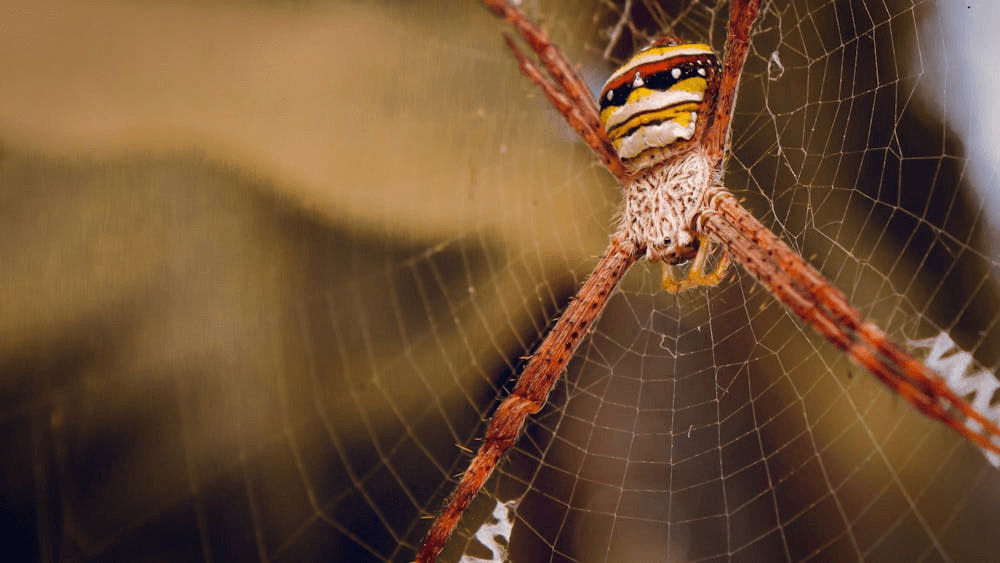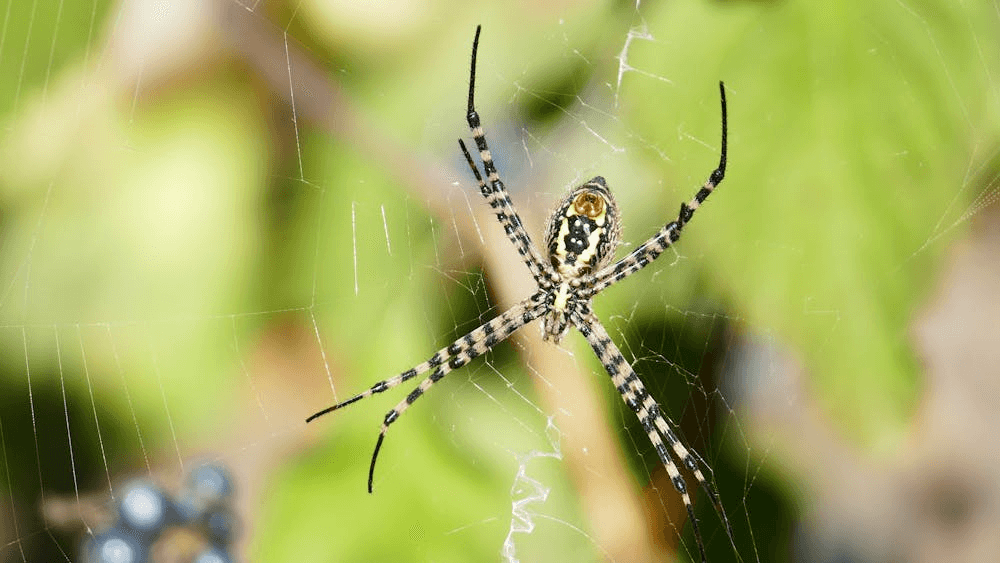📑Table of Contents:
The banana spider, a term that evokes curiosity and, for some, trepidation, belongs to a realm filled with intrigue and natural wonder. These spiders, often wrapped in myths and misconceptions, play an essential role in our ecosystems. This deep dive aims to uncover the reality of banana spiders, exploring their characteristics, habitat, and the myths surrounding them.

Decoding the Name “Banana Spider”
The moniker “banana spider” refers to several species across the globe, but the vibrant yellow coloring, reminiscent of ripe bananas, is a common trait among them. Contrary to popular belief, these spiders rarely ride on banana bunches. Their association with bananas is more about their appearance and tropical habitat than their fruit preferences.
Habitat and Distribution
Banana spiders, scientifically known as golden silk orb-weavers (genus Nephila), exhibit diverse habitats and distributions, reflecting their remarkable adaptability to various environmental conditions. These spiders are renowned for their intricate golden webs, which they construct meticulously to trap their prey.
Preferred Habitats
Banana spiders are commonly found inhabiting wooded areas, where they can weave their expansive webs between trees, branches, and shrubs. They often select locations with ample vegetation and sunlight within these forested environments to maximize their hunting success. However, they are not limited to forests and can thrive in various other habitats.
Gardens and parks are another favored habitat for banana spiders, particularly in urban and suburban settings. Here, they may establish their webs among ornamental plants, flowers, and foliage, taking advantage of the diverse insect populations attracted to these environments.
Tropical regions are particularly conducive to banana spider populations due to their favorable climate and abundant vegetation. Banana spiders are prevalent in tropical rainforests, contributing to their rich biodiversity. The warm temperatures and high humidity of tropical regions provide ideal conditions for banana spiders to thrive and reproduce.
Global Distribution
Banana spiders have a widespread global distribution, with various species on every continent except Antarctica. While they are most commonly associated with tropical and subtropical regions, some species have also adapted to temperate climates.
Banana spiders can be found in Africa, Asia, Australia, and the Americas in a diverse range of habitats, from dense rainforests to arid savannas. Each geographic region harbors its unique species of banana spider, each with its own distinct characteristics and behaviors.
Unraveling the Mysteries
Banana spiders are marvels of the natural world. Here’s why they’re worth our admiration and respect:
- Architects of Nature: Banana spiders, belonging to the Nephila genus, are known for constructing large, intricate webs. Their silk, one of the strongest natural materials, showcases their remarkable engineering.
- Environmental Guardians: Banana spiders help control pest populations by feasting on insects, including mosquitoes and agricultural pests. This diet indirectly protects human health and food sources.
- Global Dwellers: While people often associate these spiders with tropical climates, these arachnids inhabit various parts of the world, including the southeastern United States, Australia, Africa, and Asia. Their presence is a sign of a healthy ecosystem.
Busting the Myths
Despite their beneficial role, banana spiders are shrouded in myths. Here’s the truth behind the tales:
- Myth: Banana spiders are dangerous to humans. Reality: Their venom isn’t deadly to humans. Bites are rare and typically result in mild symptoms.
- Myth: Banana spiders are aggressive. Reality: They are quite docile and avoid humans. Any defensive behavior is out of self-preservation, not aggression.
- Myth: Bananas attract banana spiders. Reality: Despite the name “banana spider,” humans named these arachnids so. Banana spiders do not exhibit attraction to bananas.
- Myth: These spiders are invasive pests. Reality: Banana spiders naturally inhabit many regions where they actively play crucial roles in maintaining ecosystem balance by controlling insect populations.
- Myth: Banana spiders are harmful to agriculture. Reality: While banana spiders may occasionally capture and consume agricultural pests in their webs, they are not detrimental to agriculture overall.
Besides, the Banana spider’s importance extends far beyond its impressive webs. They are integral to the balance of ecosystems, serving as both predator and prey. Controlling insect populations contributes to the health of crops and natural vegetation. Observing them can offer insights into the health of our environment, acting as bioindicators for ecological changes.
Lastly, having a cute bunny is a surefire way to add a dose of happiness to your day. Their fluffy fur and gentle eyes captivate hearts, offering a moment of pure joy and serenity amidst the hustle and bustle of daily life.
The Life of a Banana Spider
Understanding the lifecycle and behavior of this creature can deepen our appreciation for these creatures:
- Lifecycle: From egg to maturity, these spiders exhibit fascinating growth stages, each marked by molting and increasing web complexity.
- Behavior: These spiders exhibit intriguing behaviors, from the maternal protection of eggs to the males’ delicate courtship dances, highlighting the complexity of their social interactions.
- Conservation Status: While not currently endangered, habitat destruction and climate change threaten the banana spider. Protecting their environments ensures their continued role in biodiversity.
Cultural Significance and Symbolism
Banana spiders, also known as golden silk orb-weavers, hold diverse cultural significance in various societies and traditions around the world. From folklore to spiritual beliefs, these arachnids have captured the imaginations of people across different cultures for centuries.

Conclusion
Far from being a creature to fear, the banana spider is a testament to nature’s ingenuity and beauty. By demystifying these spiders and understanding their place in the world, we can move from apprehension to appreciation. As architects, guardians, and essential parts of their ecosystems, these spiders embody the interconnectedness of life.
So, the next time you encounter the term “banana spider,” remember the extraordinary creature behind the name—a beast that, in its silent way, contributes significantly to the tapestry of life on Earth.
Additionally, exploring CFS grain bids can offer valuable insights into current market trends and prices for farmers and traders. This information is crucial for making informed decisions about selling and buying grains, ensuring you stay competitive and profitable in the dynamic agricultural market.





